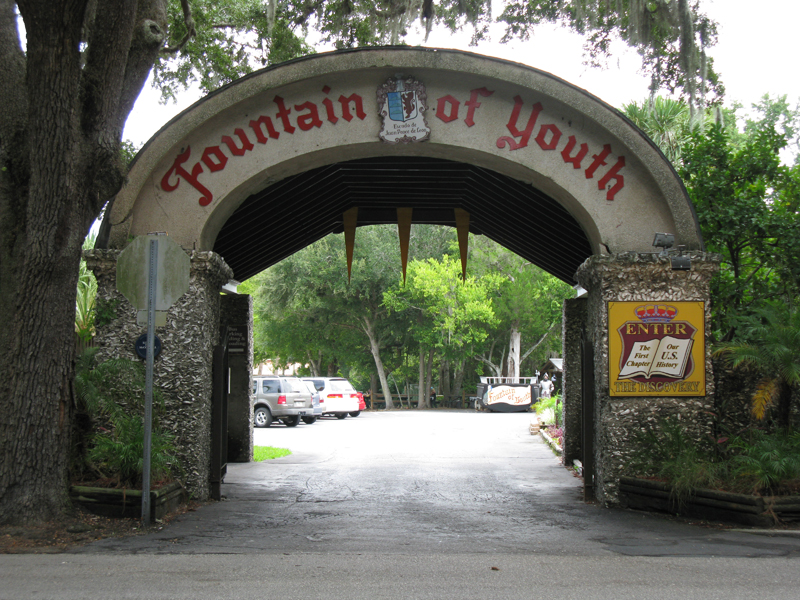
Fountain of Youth (2) |
 |
|---|
Source: WTL© photographs on site at the Fountain of Youth in St. Augustine, Florida. According to the historical record, Ponce de León led the authorized private expedition of 200 men and three small ships (the Santiago, the San Cristobal and the Santa Maria de la Consolacion) on a voyage of discovery and future colonization. He left Puerto Rico on March 4, 1513, and on Easter Sunday, March 27, Easter Sunday, he sighted an island that was unknown to his sailors. It is possible that this "island" was actually Florida, which was still thought to be an island for several years after after 1513. On April 2, 1513, he sighted land again which Ponce de León thought was another island. This one he named La Florida because it was during the Easter season. They came ashore and, by means of the requerimiento and usual legal procedures, they took possession of this new land. The precise location of this landing on the Florida coast is now definitively known. It may have been at the site at St. Augustine; other proposed landing sites are Ponce de León Inlet south of St. Augustine or even Melbourne Beach. In any event, Ponce de León did sail north where he and his men rowed ashore at St. Augustine between what is now the Guana Tolomato Matanzas National Estuarine Research Resereve and Ponte Vedra Beach. Interestingly, in an event that occurred later in 1565, on April 8th his ships encountered an ocean current that pushed them farther off shore forcing them to seek anchorage. This current is the Gulf Stream, which has maximum strength between the Florida coast and the Bahamas. This current became the primary route for Spanish shipping between Mexico, Cuba, and the rest of the Spanish Latin American empire for the next three centuries. In 1521 Ponce de León organized a formal colonizing expedition with two ships, 200 men, a couple of priests, farmers, artisans, 50 horses, domestic animals, and farming equipment. This second expedition landed on Florida's Gulf of Mexico southwest coast, near the Caloosahatchee River or Charlotte Harbor. Calusa warriors attacked the Spanish colonists, Ponce de León was wounded by a poisoned arrow, and the colony attempt retreated back to Cuba. Ponce de León died in Havana; he was finally buried in the Cathedral of San Juan Bautista in San Juan, Puerto Rico. |
|---|
 |